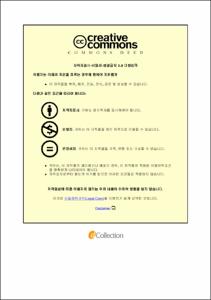말레이시아 코피티암으로 본 “혼종공간”의 변형
- Alternative Title
- Kopitiam in Malaysia and the Transformation of ethnic Hybrid Space
- Abstract
- In Malaysia that represents multi-ethnic country in Asia, there are three major ethnic group such as Malay, Chinese, and Indians. The Malay Peninsula has long been the center of trade between the East and the West, which has caused the massive migration of people. The long colonial period led a huge labor immigration by Chinese and Indians. To these days, various forms of migration have been so common in Malaysia that Malay culture consist of mixed cultural traits of different ethnic groups.
In particular, the food consuming can represent this mixed multi-ethnic culture. However, in Malaysia, the fact that Malay is Muslim and Chinese is non-Muslim on the other hand is so striking. This dichotomous distinction has resulted in a clear separation of one ethnic group’s daily food consuming space from that of others.
This paper mainly discuss the patterns of ethnic consumption in Malaysia and the transformation of ethnic space after Halalization, focusing on the ‘restaurant like cafe’, namely “Kopitiam” in Malaysia. Kopitiam which seems to be the combination of cafe and restaurant, has the literal meaning of ‘a coffee shop’, however, because of its unique historical and cultural background, it is known as a Malaysian Chinese Cafe. Early Kopitiam was run by Chinese immigrants to the Malay Peninsula, and Chinese have used this space to inherit and share their culture. Because of this, Kopitiam had been recognized as a Chinese space, and it was difficult to find Malay eating here.
Malay muslim in officially Islamic country, have increased contact with non-Muslims in rapidly mushroomed shopping malls, with imported goods and services from non-Muslim countries, and with transnational companies which come into Malaysia. Muslims have been thoroughly forced to consume only the “halal”products, which is the allowed and specified by the Koran, and in principle, and not to consume the “haram” and the so-called “mushbooh” which is ambiguous between the two. The increase of numbers of non-halal spaces and of the contacts with non-Muslims has made it difficult for Muslim in Malaysia to consume halal with their full confidence. As a result, the meaning of halal began to be re-structured so that Malaysian government introduced the halal certification system.
“Halalization”, which refers to the process of changing the perception and practice of halal, has brought changes of Malay’s daily life. Malay muslim begin to visit a place that had been traditionally recognized as a Chinese space, or new places where both Malay and Chinese can be together begins to be born. In other words, in the past, the ethnic and religious boundaries were clear and definite, but after the halalization, the boundary of space became lighter and it begins to create a ‘space where people and culture are mixed.’
This paper firstly examined the migration history and ethnic characteristics of Malaysia, and the distinction between ethnic groups, which is followed by the analysis of relationship between specific ethnic groups and spatial usage, focusing on Kopitiam. In addition by analyzing the changes in Kopitiam after halalization, the effect of halalization on ethnic distinction and daily spaces in Malaysia was explained to understand the interaction and the relationship between people and space in depth.
- Issued Date
- 2020
- Awarded Date
- 2020. 8
- Type
- Dissertation
- Publisher
- 부경대학교
- Affiliation
- 부경대학교 대학원
- Department
- 대학원 글로벌지역학과
- Advisor
- 정법모
- Table Of Contents
- I. 서론 1
1. 연구목적과 배경 1
2. 선행연구 검토 및 이론적 틀 3
3. 연구대상 및 방법 9
4. 논문의 구성 11
Ⅱ. 다종족 국가 말레이시아 12
1. 말레이시아의 이주역사와 다종족 국가 형성 12
가. 말레이시아의 이주역사 12
나. 화인 이주역사 13
2. 말레이시아의 종족 구분 16
Ⅲ. ‘문화 혼종공간’ 코피티암 23
1. 말레이시아의 코피티암 23
가. 코피티암의 역사와 유형 23
나. 코피티암의 차별성 28
2. 화인공간으로서의 코피티암 31
가. 화인 이주와 코피티암 31
나. 코피티암에서 화인의 흔적 찾기 32
3. 새로운 “혼종공간”으로서 코피티암 39
가. 싱가포르의 국가정책과 코피티암 39
나. 말레이시아의 기업화된 코피티암 44
Ⅳ. 할랄화와 ‘사람이 섞이는 공간’의 탄생 45
1. ‘할랄’의 재구성 45
가. 재구성 이전의 할랄과 하람 45
나. ‘할랄의 재구성’과 할랄화 47
다. 할랄화로 인한 변화 49
2. 말레이시아에서 ‘할랄화’의 의미 51
가. 말레이시아의 할랄인증제도 51
나. 말레이시아와 할랄화 53
3. 코피티암과 할랄화: 올드타운 화이트커피 사례를 중심으로 55
가. 할랄화와 기업화된 코피티암 55
나. ‘사람이 섞이는 공간’ 60
Ⅴ. 결론 62
참고문헌 66
- Degree
- Master
- Files in This Item:
-
-
Download
 말레이시아 코피티암으로 본 “혼종공간”의 변형.pdf
기타 데이터 / 1.2 MB / Adobe PDF
말레이시아 코피티암으로 본 “혼종공간”의 변형.pdf
기타 데이터 / 1.2 MB / Adobe PDF
-
Items in Repository are protected by copyright, with all rights reserved, unless otherwise indicated.